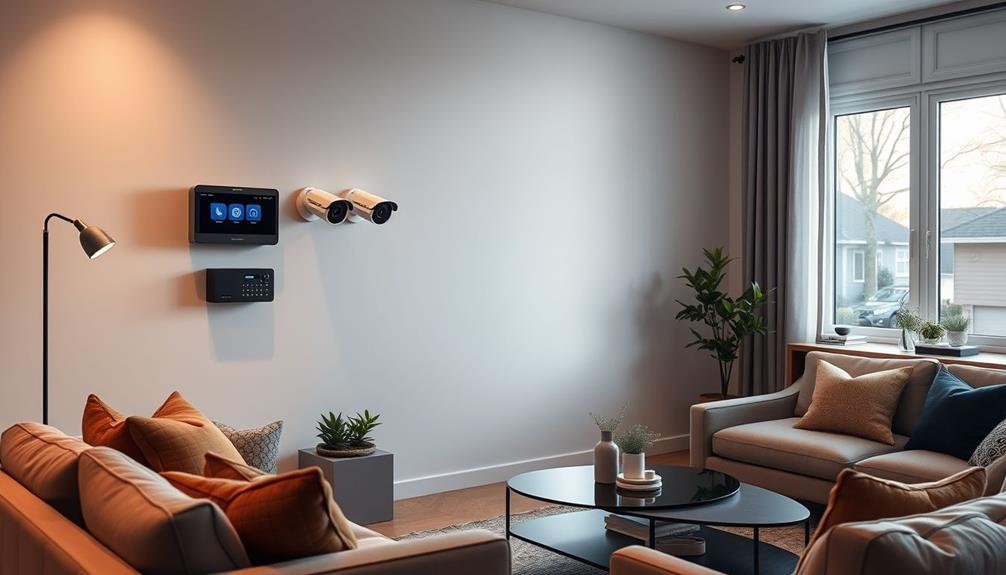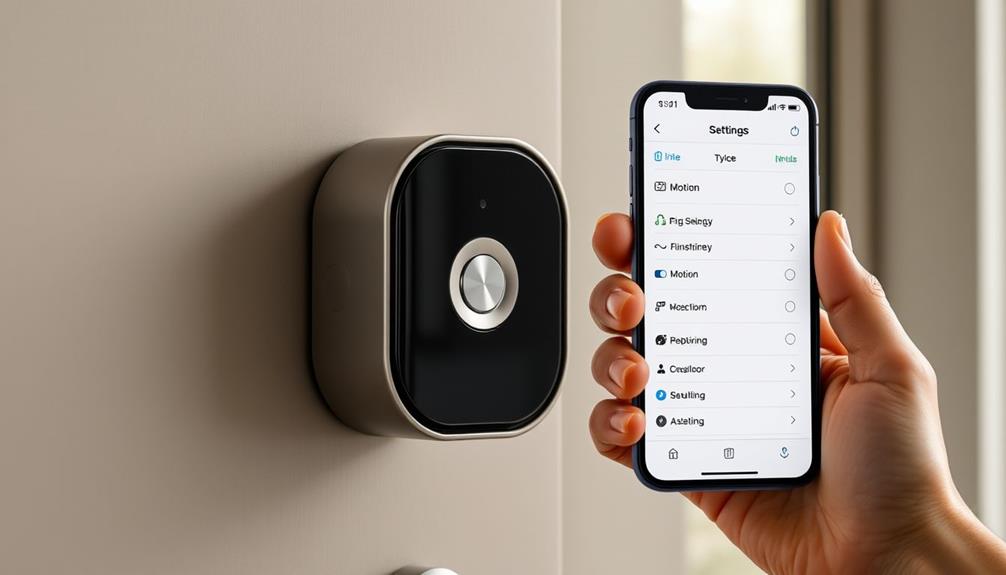No, Spectrum no longer provides home security systems. They ceased offering security services on February 5, 2020. Many customers experienced issues with outdated equipment and malfunctioning devices, leading to feelings of frustration and insecurity. If you are in need of home security, you may want to consider alternatives such as Ring or Abode, which offer modern, compatible systems. It is important to assess your specific requirements and compare different providers to ensure you receive the best protection. For assistance in exploring your options, information on transitioning to new providers and available solutions can guide you in finding the right fit. When selecting a new home security provider, it is essential to consider the benefits of home security, including peace of mind, safeguarding valuables, and the ability to monitor your home remotely. Many systems now come equipped with features like smart home integration, video doorbells, and round-the-clock professional monitoring as technology advances. By researching various options and understanding the advantages of home security, you can make an informed decision that meets your individual needs and provides the desired level of security. Home security and insurance are closely linked, as several insurance companies offer discounts for having a dependable home security system in place. Investing in a reputable provider may potentially reduce your insurance premiums and offer additional protection for your home and possessions. It is important to discuss potential discounts with your insurance provider and confirm that your home security system fulfills their requirements for any available savings. Moreover, having a comprehensive home security system can provide peace of mind and potentially save you money in the long term by helping prevent costly incidents like burglary or property damage.
Key Takeaways
- Spectrum's home security services were part of the Smart Home package but were discontinued on February 5, 2020.
- Prior to discontinuation, the service included basic monitoring features like sensors, motion detectors, and cameras.
- Customers reported significant financial losses due to unusable proprietary equipment after the service ended.
- Spectrum's firmware prevented integration with third-party systems, complicating transitions to new providers.
Overview of Spectrum's Security Services
Spectrum's security services, part of its Smart Home package, offered basic monitoring features that many customers relied on before the service was discontinued in early 2020. This home security service included essential components like door and window sensors, providing users with peace of mind.
When Spectrum acquired Time Warner Cable in 2016, it expanded its offerings, integrating home security into its suite of smart products.
However, as time went on, customers faced challenges. With the official discontinuation on February 5, 2020, many found themselves with non-functional equipment, having received notifications only in December 2019. The shift to alternative services like Abode and Ring was suggested, but this often left you with incompatible devices, leading to unexpected financial losses.
Ultimately, the discontinuation diminished your security capabilities. Many of the smart features and remote monitoring services you once relied on were no longer available.
While Spectrum home security had initially provided a convenient solution for many, the end of the service left customers scrambling for effective alternatives to guarantee their safety.
Impact of Service Discontinuation

The abrupt discontinuation of home security services left many customers scrambling to find effective alternatives and grappling with the loss of previously reliable monitoring features. You probably felt the frustration as Spectrum's service termination meant you could no longer depend on the thorough security you once enjoyed.
With the sudden shutdown, customers faced serious challenges:
- Financial Loss: Many reported nearly $1,000 in unusable equipment, thanks to Spectrum's proprietary devices.
- Diminished Security: Cameras and sensors turned useless without the monitoring service, leaving homes vulnerable.
- Limited Options: The late notification in December 2019 offered little time to changeover, leaving you to fend for yourself in a chaotic market.
The impact was profound, as the home security business you relied on effectively orphaned your existing equipment.
Spectrum's firmware coding made it impossible to integrate their devices with other systems, deepening your dissatisfaction.
It's essential to understand how this service discontinuation not only disrupted your security plans but also forced you to rethink your entire approach to protecting your home.
Alternatives for Home Security

Finding a reliable alternative for home security after Spectrum's discontinuation can feel overwhelming, but there are several solid options available to help you safeguard your home.
You might consider popular providers like Ring and Abode, which offer user-friendly systems with various features tailored to different needs.
Researching local alarm companies can also lead you to better deals and personalized services. Since individual needs vary greatly in the home security market, comparing different service plans and device compatibility is essential. This way, you guarantee you receive the best value and functionality tailored to your specific requirements.
Additionally, Cornerstone Protection provides free security consultations, emphasizing the importance of local expertise. They can guide you through potential shifts from Spectrum and help you find a system that fits your lifestyle and budget.
Transitioning to New Providers

Shifting to new providers can be a straightforward process if you take the time to compare options and understand your security needs. Since Spectrum Security services ended, it's vital to explore alternatives that fit your lifestyle and budget. Here are three important steps to help you navigate smoothly:
- Research Options: Look into companies like Ring and Abode, which Spectrum has partnered with. They often provide discounts for former Spectrum customers.
- Evaluate Your Needs: Assess what features you want in a new system—think about smart home integration, monitoring options, and customer support guarantees.
- Check Equipment Compatibility: Be aware that many devices from your Spectrum system won't work with a new provider, so you may need to invest in a complete equipment overhaul.
Customer Experiences and Feedback

Many customers have voiced their frustrations over Spectrum's abrupt discontinuation of home security services, feeling abandoned and financially impacted by the sudden change.
Since the termination on February 5, 2020, many users reported losing nearly $1,000 on non-reusable security equipment that became obsolete. This left many feeling that their trust in Spectrum, a service originally provided by Time Warner Cable, was misplaced.
Customers expressed disappointment at the lack of communication from Spectrum regarding the shift to alternative providers. Many found themselves scrambling to find compatible solutions for their existing devices, only to discover they were left with unusable equipment.
The feedback also revealed mixed experiences with Spectrum devices themselves; some users reported better functionality when switching to third-party hubs and alternative security solutions.
Security Technology Considerations

When considering security technology, you need to think about device compatibility challenges and the features that truly protect your home.
It's important to understand how these aspects influence your overall security experience.
If you're shifting to alternatives, knowing what to look for can make all the difference.
Device Compatibility Challenges
Device compatibility challenges with Spectrum's Intelligent Home systems can leave users frustrated, as proprietary coding often hinders integration with popular third-party platforms.
If you're considering Spectrum's security options, you might face several issues that can dampen your experience:
- Limited Integration: Many Spectrum devices, like door/window sensors and smart thermostats, struggle to pair with systems such as SmartThings, leaving you with fewer choices for a cohesive smart home setup.
- Obsolescence Concerns: With Spectrum discontinuing home security services in February 2020, many of your cameras and other equipment could become obsolete, making your investment feel wasted.
- Technical Barriers: While some users have discussed flashing firmware for broader compatibility, this requires technical expertise and isn't guaranteed to work for all devices, adding complexity to your home security setup.
These device compatibility challenges can ultimately affect the effectiveness and reliability of your security system, so it's essential to weigh your options carefully before committing to Spectrum's offerings.
Security Features Overview
Spectrum's home security systems offered a range of features designed to enhance your safety, including door/window sensors, motion detectors, and cameras that worked seamlessly within their Intelligent Home package.
These door and window sensors were essential for alerting you to unauthorized entries, providing real-time notifications to your smartphone. The motion detectors also played a significant role in monitoring movement around your property, ensuring you stayed informed about any unusual activity.
Additionally, the system included a Glass Break feature that detected the sound of breaking glass, allowing for rapid response in case of a break-in. This multi-layered approach to security gave you peace of mind, knowing that various entry points were monitored effectively.
However, it's important to remember that once Spectrum discontinued its home security offerings, many of these devices became non-functional without the monitoring service.
This left users with concerns about the security investments they made, as compatibility with alternative systems was limited due to unique firmware.
Ultimately, while Spectrum's systems provided robust features during their operation, the discontinuation raised significant issues for users relying on their technology for home safety.
Transitioning to Alternatives
As you navigate the change to alternative home security providers, understanding your options and the technology available is vital for maintaining robust protection. With the discontinuation of Spectrum's home security services, many customers must adapt and consider effective solutions. Here are three important aspects to keep in mind during this change:
- Compatibility: Many of your existing Spectrum devices may no longer work with new systems, requiring you to invest in updated equipment.
- Research: Investigate local alarm companies and compare their service plans, devices, and support guarantees to find the perfect fit for your needs.
- Advanced Features: Look for advanced security options, like glass break sensors and smart home integration, to enhance your home's protection.
Partnering with companies like Ring and Abode, which Spectrum established relationships with, can provide discounts and new service options for adapting users.
Future of Home Security Solutions

How can the evolving landscape of home security solutions adapt to meet your needs for flexibility and integration with smart technology?
With Spectrum discontinuing its home security services, many internet customers are now looking for alternatives that offer seamless integration with smart devices.
The future of home security lies in systems that prioritize compatibility and flexibility, allowing you to customize your setup according to your preferences.
As you explore new security options, consider providers like Ring and Abode, which are designed to work well with various smart home devices.
This trend emphasizes the need for systems that not only protect your home but also enhance your overall smart living experience.
You'll want to research local alarm companies and compare their service plans to find a solution that truly fits your lifestyle.
The shift towards adaptable security solutions means you can expect user-friendly interfaces, advanced monitoring features, and the ability to control everything from your smartphone.
As the market evolves, your choices will expand, giving you the power to create a security system that's as unique as your home.
Frequently Asked Questions
Does Spectrum Offer a Security System?
No, Spectrum doesn't offer a security system anymore. Since they discontinued their home security service in 2020, you'll need to explore alternatives with other providers if you're looking for reliable security solutions.
Is the Spectrum Security Suite Free?
Yes, the Spectrum Security Suite is free for subscribers. You get protection against viruses and spyware, plus you can manage your preferences through the My Spectrum App, ensuring your devices stay safe without extra costs.
What Kind of Security Does Spectrum Wifi Have?
Spectrum WiFi offers robust security with its Security Shield feature, blocking millions of threats daily. You'll enjoy secure browsing, device protection, and continuous monitoring, keeping your online experience safe and your network performance ideal.
How Does Spectrum Security Work?
Spectrum Security uses proprietary devices like cameras and sensors to monitor your home. You manage everything through the My Spectrum App, receiving real-time alerts and enjoying features like secure browsing and unusual activity monitoring for added protection.
Conclusion
In summary, while Spectrum once offered home security systems, the service has since been discontinued, leaving you with new choices to evaluate.
Did you know that homes without security systems are 300% more likely to be broken into?
As you explore alternatives, think about your safety and how the right provider can give you peace of mind.
Shifting to a new security solution can strengthen your home's defenses, ensuring you feel secure in your space.









